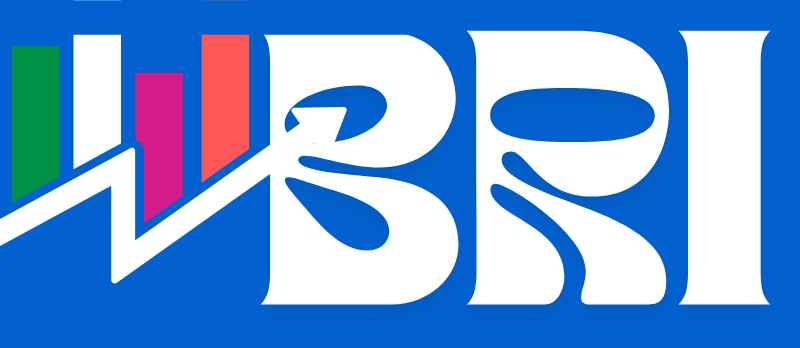
Ferrous Metal Market Size
As per the Ferrous Metal Market size analysis conducted by the CMI Team, the global Ferrous Metal Market is expected to record a CAGR of 4.8% from 2025 to 2034. In 2025, the market size is projected to reach a valuation of USD 1.8 Trillion. By 2034, the valuation is anticipated to reach USD 2.7 Trillion.
Ferrous Metal Market Overview
As per the industry experts at CMI, the key factor behind the growth of the ferrous metals market is high infrastructure development and industrialization, especially in developing economies. Another important sector driving market demand for steel is the automotive sector, which has witnessed a growth in steel consumption for the manufacture of vehicles. New technologies in production, including sustainable manufacturing processes, are improving efficiency and lowering costs, thereby augmenting the growth of this market.
Ferrous Metal Market Growth Factors and Dynamics
- Infrastructure Growth: The rising development of infrastructure all around the globe, especially in developing nations, has been a significant growth driver for the ferrous metal market. The need for iron and steel in the construction of buildings, roads, bridges, and other infrastructure rises with the accelerating trend toward urbanization. Government investments in large infrastructure projects further drive up the demand for iron and steel, ensuring long-term growth prospects for the sector.
- Technological Advancements: Rising Automotive Demand The automotive sector emerges as the largest user of ferrous metal. High-strength, lightweight steel grades are seeing giant demand with the vast scale of vehicle production, magnetic vehicles, and green vehicle requirements. Specialised steel in vehicle bodywork, engine parts, and chassis contributes significantly to the overall demand for ferrous metals, thereby increasing automotive demand.
- Price Volatility of Raw Materials: Price volatility for major raw materials like iron ore, coal, and scrap metal materially impacts the ferrous metals market. For these raw materials, the production cost is relatively high, and their demand-supply scenario directly controls the price of steel; the prices of iron ore, scrap, and coal significantly influence steel demand. Supply changes, geopolitical influences, and economic situations all contribute to such volatile movement in prices, causing producers to be uncertain about the future.
- Environmental Regulations: The stringent environmental regulations are reshaping the world in terms of ferrous metal by mandating the applicability of more sustainable production practices by companies. With climate change concerns and waste management increasingly gaining currency with the governments, companies are searching for greener technology such as hydrogen-based steel production and advanced recycling. Even as this provides fresh opportunities, it persists as a challenge in terms of production costs, requiring significant investment in innovation.
- Geopolitical Tensions and Trade Policies: Geopolitical tensions and trade policies, for example, tariffs and trade barriers, have played a significant role in making the ferrous metals market of the present day truly global. Trade disputes such as the tariff dispute between the USA and China may result in trade wars that disrupt global supply chains by increasing raw material costs, in turn leading to relative steel price hikes. These dynamics are part of the ongoing process of volatility in the market, affecting production and consumption structures internationally.
- Urbanization Rising Population: The rising population globally and in towns has an increasing requirement for housing, infrastructure, and industrial production. Residential and commercial constructions, transportation infrastructure, and public services all grow with this demand for ferrous metals, particularly steel. This era of urbanization presents ferrous metal producers with long-term potential for growth, especially in emerging markets.
- The Growth of Industrial and Manufacturing: The growing need for ferrous metals in developing economies is coming from industrial and manufacturing development. Every time new factories and production plants come up, newly required high-quality ferrous metals for machinery tools and structural components are built up. Most conspicuously, this is happening across the Asia-Pacific region, where industrialization is booming. Thus, it opens a channel for a very promising window for ferrous metals.
- Competitive Threat from Other Materials: Because of the popularity of new materials such as aluminum, composite materials, and high-strength polymers, these materials compete with ferrous metals, especially for industrial sectors such as automotive and construction. These alternative materials are prized for their lightweight feature, higher durability, and corrosion resistance, particularly in automobile manufacturing. Markets for ferrous metals will not be able to gain resilience as this new alternative largely reduces the traditional demand for steel and iron.
Report Scope
| Feature of the Report | Details |
| Market Size in 2025 | USD 1.8 Trillion |
| Projected Market Size in 2034 | USD 2.7 Trillion |
| Market Size in 2024 | USD 1.7 Trillion |
| CAGR Growth Rate | 4.8% CAGR |
| Base Year | 2024 |
| Forecast Period | 2025-2034 |
| Key Segment | By Product Type, Application and Region |
| Report Coverage | Revenue Estimation and Forecast, Company Profile, Competitive Landscape, Growth Factors and Recent Trends |
| Regional Scope | North America, Europe, Asia Pacific, Middle East & Africa, and South & Central America |
| Buying Options | Request tailored purchasing options to fulfil your requirements for research. |
Ferrous Metal Market SWOT Analysis
- Strengths: A firm demand for steel and iron products provides strength to the ferrous metal market, serving as the backbone of the construction, automotive, and manufacturing industries. The market is considered stable and uninterrupted, dominated by global leaders like ArcelorMittal, POSCO, and Nucor. Developments in production technologies, such as electric arc furnaces and hydrogen-based steel production, are profitable and environmentally friendly. They also ensure compliance with regulations, which makes companies more competitive. The profound market presence of key players further strengthens the market position, along with their capacity to innovate and respond to demand.
- Weaknesses: Higher capital investment and operational costs plague ferrous metals, posing a major challenge for the market. The facilities needed for steel and iron production must be too large and costly to maintain and upgrade. The prices of raw materials, mainly iron ore and coal, exhibit a high degree of volatility; therefore, uncertainty and profitability are greatly affected by these fluctuations. Moreover, traditional methods of steelmaking compromise the ability to react flexibly to changing market demands. Environmental sanctions and regulatory pressures only add to the complications.
- Opportunities: The ferrous metal market has immense growth opportunities. The trend toward sustainable technologies and green steel requirements affords companies a chance to become leaders in environmental responsibility. The soaring demand for specialized steel will be another lever for growth, with electric vehicles gaining momentum. Emerging markets in the Asia-Pacific, Africa, and Latin America harbor untapped potential as urbanization and industrialization add to the demand for ferrous metals. Investments in recycling technologies also further resource efficiency and net costs.
- External threats impact the ferrous metals market. Price volatility on raw materials, like iron ore, would change the cost of production, which would, in turn, impact the margins. Trade barriers and geopolitical turmoil, such as tariffs between nations, are a hindrance to global supply chains and affect the pricing mechanism. Environmental regulations are becoming more stringent, imposing large investments in sustainable practices that would affect the bottom line. Another danger to long-run growth prospects is the competition provided by alternative materials such as composites and aluminum-steel substitutes in some markets.
List of the prominent players in the Ferrous Metal Market:
- ArcelorMittal
- Baosteel
- Nippon Steel Corporation
- China Steel Corporation
- POSCO
- Tata Steel
- JFE Steel Corporation
- United States Steel Corporation
- Hyundai Steel
- Steel Dynamics Inc.
- Nucor Corporation
- Thyssenkrupp AG
- Gerdau
- Wuhan Iron and Steel Corporation (WISCO)
- Severstal
- SSAB
- EVRAZ Group
- SAIL (Steel Authority of India Limited)
- Essar Steel
- Voestalpine AG
- Others
The Ferrous Metal Market is segmented as follows:
By Product Type
- Steel
- Iron
By Application
- Construction
- Automotive
- Machinery & Equipment
Regional Coverage:
North America
- U.S.
- Canada
- Mexico
- Rest of North America
Europe
- Germany
- France
- U.K.
- Russia
- Italy
- Spain
- Netherlands
- Rest of Europe
Asia Pacific
- China
- Japan
- India
- New Zealand
- Australia
- South Korea
- Taiwan
- Rest of Asia Pacific
The Middle East & Africa
- Saudi Arabia
- UAE
- Egypt
- Kuwait
- South Africa
- Rest of the Middle East & Africa
Latin America
- Brazil
- Argentina
- Rest of Latin America
[embedsocial_reviews id=”d4ae80cffae3d938f997111953699a733c8e6f99″]
